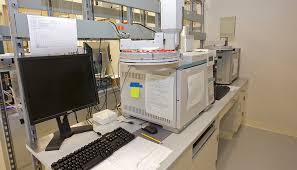Biomarkers in crude oils can be used to assess the thermal maturity of the source rocks. This is because there are changes in the relative abundances of certain biomarkers in crude oil as the maturity of the source rocks changes.
Therefore, variations in the biomarker parameters can be used to identify and characterize the source rock maturity and for analysis of the migration of the oil.
These biomarker maturity parameters can be formulated from the ratio of one biomarker to another which are indicator of its use of processes that occur during source rock maturation.
The processes such as: Cracking (breaking large molecules into smaller molecules); Isomerization (changing the structural arrangements of atoms in the molecules); Aromatization (formation of aromatic rings by loss of hydrogen from naphthenes).
These processes create associated relative changes in the biomarker in crude oil.
Read Also : Petroleum Tagging and Biomarker Analysis
In the applications of biomarkers for petroleum maturity or oil tagging, there are some limiting factors or considerations must be kept in mind:

It must be known that the exact relationship between a biomarker parameter and the source maturity is dependent on heating rate; source rock geology, and source organic matter’s chemistry (kerogen type).
As a result, the exact maturity associated with a given value for a biomarker parameter can change from basin to basin.
Furthermore, the relationship between a biomarker maturity indicator and source rock maturity is generally non-linear.
With increasing maturity, many biomarker maturity indicators reach terminal values; hence, a given biomarker parameter is applicable only over a specific maturity range.
The concentrations of biomarkers in petroleum decrease with thermal maturity.
Despite these limitations, biomarker indicators of source maturity can be extremely useful. An example of biomarker parameters that can be used are those based on compounds that are highly resistant to biodegradation.

